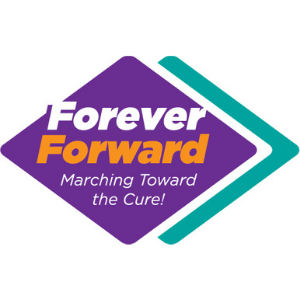We are forever in motion as we explore treatment and cure options. But we hold one vision clearly before us every step of the way. Together, we will minimize the dramatic effects of ectodermal dysplasias and enable parents and children to proudly —
Say “Yes!” to a future free of fear and filled with confidence and hope.
My dream is that children and families dealing with incontinentia pigmenti can live without the constant fear of “What if…” That they will have a community, medically and socially, that can offer answers, support and hope!
~ Shari Ezell, mother of Allie, incontinentia pigmenti
The NFED is working to advance early awareness, diagnosis, treatments and cures so babies affected with this syndrome can live long and healthy lives.
What is Incontinentia Pigmenti (IP)?
It may be simpler to start with what it’s not…
- It’s not predictable – the impact and abnormalities are nearly as unique as fingerprints.
- In males, it’s usually not survivable through birth.
- Like so many other forms of ectodermal dysplasia, it’s often not easily identified, further complicating treatment.
IP is an x-linked dominant disorder and in pre-natal males, usually ends in miscarriage. In affected females, it causes widely variable abnormalities of the skin, hair, nails, teeth, eyes, and central nervous system.
There are four stages of IP, with the skin heavily involved in each. These progressive skin issues typically constitute the primary IP diagnosis criteria: 1) skin erythema, vesicles, pustules; 2) skin papules, wart-like (verrucous) lesions, thickened skin patches (hyperkeratosis); 3) skin hyperpigmentation, primarily affects trunk, follows Blaschko’s lines, streaks and whorls; and 4) skin pallor, atrophy, and scarring (most evident on lower legs).
While early diagnosis is especially important, it is also challenging due to a general lack of awareness in the medical community. One of the NFED’s goals is to create greater awareness among medical professionals – and research about IP.
As a mom, I hope and dream Allie will have answers that I didn’t. That she won’t be limited by the ‘What if’s,’ that she’ll be able to one day have her own family without fearing IP because of all the unknowns. That the medical community won’t shrug off her needs and concerns…because there isn’t enough research.
~ Shari Ezell
Our Impact on Research

The Need for Research – The Need for Hope
The NFED is dedicated to finding a cure. We have funded research studies at more than 40 centers around the world and have sponsored numerous conferences focused on specific syndromes, classification and therapies. NFED-funded research projects have identified genes for ectodermal dysplasias, established treatment protocols, pioneered a synthetic protein replacement therapy, and characterized many specific syndromes.
We’ve come so far…with identifying previously unknown syndromes, educating and supporting families around the world, helping create treatments, paving the way for in-utero synthetic protein trials. And we still have a long way to go. But, I know we’ll get there.
How do I know? Because we all care about and love the very same people. And we want to make sure that they are not in pain, that their future is hopeful, and that they can look forward to having children and not being afraid of what ectodermal dysplasia will mean to them.
~ Mary Fete, Executive Director, NFED
We Need You on Our Dream Team!
We can only achieve this through new and continued research. And NFED is our connection to that research community, pushing for the research that we so desperately need. And this research is our hope!
~ Shari Ezell
Will you help us say “Yes!” to someone’s dream?
Donate To Research Now View Research BrochureAll Forever Forward gifts will help the NFED fund more research projects, identify effective treatments, pursue potential cures, support clinical trials, and continue to expand the understanding of ectodermal dysplasias, including research conferences.
